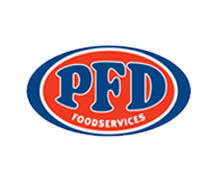Linear Programming
Linear programming: Linear programming is a type of optimization problem where the goal is to find the best linear solution to a problem.
Linear programming is a powerful tool used to mathematically solve problems. It has been widely used in the fields of business, economics and engineering for decades. Its power lies in its ability to optimise solutions based on multiple constraints. This article will delve into the history of linear programming, explain how it works, and discuss its current applications.
The development of linear programming began with John von Neumann’s work on the ‘minimax theorem’ in 1928. He showed that certain types of optimisation problems could be solved using what he called ‘linear inequalities’. His work paved the way for George Dantzig's breakthrough discovery in 1947 when he developed an algorithm that allowed computers to quickly solve large scale optimisation problems using linear equations.
In recent years, advances in technology have enabled linear programming techniques to be applied to even more complex tasks such as scheduling production lines or optimising delivery routes. With this increased capacity comes greater potential for solving real-world problems - from maximising profits to minimising environmental impacts. This article will explore these possibilities and examine why linear programming remains a valuable tool today.
What Is Linear Programming In Simple Terms?
Linear programming is a mathematical technique used to optimise outcomes in situations where there are multiple variables and constraints. It can be thought of as a way of solving problems with linear equations, or linear inequalities, which involve setting constraints for the problem and then maximising an objective function that meets those constraints. Linear programming is commonly used in business decisions such as resource allocation and production scheduling.
At its core, linear programming involves finding the values of decision variables that will minimise (or maximise) an objective function subject to a set of linear inequality or equality constraints. The solution must also satisfy all given conditions so that it does not violate any of the linear equalities or inequalities set forth by the user. In addition to basic minimisation/maximisation objectives, mixed integer linear programming techniques may also be employed when optimising outcomes involving discrete decision variables.
The purpose of using this type of optimisation tool is to find solutions to complex problems while still ensuring they remain within certain parameters - i.e., meeting desired goals without exceeding established limitations. This requires careful consideration about how each variable affects the overall outcome before attempting to solve for them through linear programming methods. By leveraging these powerful tools, organisations have been able to make more informed decisions and achieve optimal results from their investments in time and resources.
What Is Linear Programming And Why Is It Important?
Linear programming is a mathematical technique used to derive optimal solutions from linear optimisation problems. It involves the formulation of a system of constraints in a form that can be solved using advanced methods such as linear programs and integer programming. In simple terms, it helps us solve certain types of problems efficiently by finding the maximum profit or minimum cost within given constraints.
When developing a linear program, several variables are involved which represent different components of the problem like decision variables, objective function coefficients and constraint parameters. From these variables, feasible solutions are generated through slack variables and other strategies. The resulting solution is then evaluated against the initial objectives set out for an optimal outcome.
The importance of linear programming lies in its ability to provide efficient ways to tackle complex problems with multiple factors at once while taking into account all relevant information available. By optimising resources, linear programs help businesses make well-informed decisions based on their goals and allocate resources accordingly. Moreover, they offer insights into how changes in one area affect other elements of any given problem and thus enable organisations to develop effective strategies for success. TIP: Using linear programming techniques can give you an edge over your competition when trying to optimise resource allocation for maximum efficiency!
What Is The Main Objective Of Linear Programming?
Linear programming is a mathematical method used to optimise an objective function, such as maximising profit or minimising cost. It does this by finding the best set of values for variables in order to fulfill certain constraints. In other words, it helps identify and solve linear optimisation problems. Here are some key components that make up linear programming:
- Linear Function - A mathematical equation consisting of multiple terms with each variable having a coefficient associated with it.
- Variables & Constraints - The number of decision variables (or inputs) in the model must be determined before problem solving can begin; these will help determine what can and cannot be done within the system. Additionally, all constraints on those variables must also be defined—these may include costs, resource limits, etc.
- Set Linear Inequalities - These inequalities form the basis of most linear programs and represent restrictions on how much of any one item can be produced or consumed. They outline which combinations of parameters satisfy given conditions in-order for them to lead to optimal solutions.
- Formulation - This stage involves writing out equations representing the problem at hand using the above-mentioned components; from here we can then create possible solutions through various algorithms and methods called “linear programming”.
The main objective of linear programming is to find a solution that meets a goal while optimising resources efficiently. This technique is often used when trying to achieve maximum profit or minimum loss under specified constraints – i.e., 'how do I maximise my profits while keeping my production costs low?' To achieve this end result, linear programming requires an accurate understanding of both the problem being solved and its underlying structure in order to devise appropriate strategies for optimisation purposes. Moreover, it should also incorporate realistic assumptions about data availability and accuracy so that results remain reliable even after implementation has been completed. Ultimately, by considering all aspects involved in decision making processes, linear programming allows businesses to analyse their options more effectively than ever before—resulting in better decisions overall!
What Are The Three Types Of Linear Programming?
Linear programming is a method used to find optimal solutions to problems with multiple, often conflicting objectives and constraints. It involves the use of linear equations and inequalities that represent relationships among unknown variables in order to maximise or minimise certain results. The three main types of linear programming are: linear equality constraint, constraint matrix, and simplex method.
The linear equality constraint type requires using binary decision variables and integer variables when solving an equation system. This form of linear programming is employed for discrete mathematics and computer science applications involving models with object-oriented components. In addition, it allows users to define their own mathematical model without having to guess the number of unknowns before they start entering data into the software program.
The other two types of linear programming include the graphical approach and the simplex method. The graphical approach uses various curves, lines, points, etc., to visualise the solution space while finding out what values of x will make all conditions true simultaneously. On the other hand, the simplex method utilises optimisation techniques such as Lagrangian multipliers in order to solve systems of equations subject to a set of constraints by moving from one feasible point (known as vertex) to another until arriving at an optimum solution.
Regardless of which type is chosen for a particular problem, understanding how each works can be essential for effectively utilising them in practice for reaching desired outcomes within given parameters. Moreover, being able to choose between different approaches makes it possible for researchers to develop methods tailored specifically for their individual needs depending on available resources and difficultly levels associated with relevant problems.
What Are The Three Components Of Linear Programming?
Linear programming is a mathematical technique used to optimise decisions by finding the best solution. It consists of three components: decision variables, objective functions and constraints. Decision variables are values that can be selected in order to achieve an optimal solution while minimising or maximising a given objective function. These variables may take integer values such as 0 or 1, real number values such as 3.2 or -4, or any other form of value depending on the type of problem being solved.
Objective functions refer to equations that specify the goal for which linear programming seeks to find an optimal solution. The most common forms of these include maximisation or minimisation problems where variables must reach their optimal values within certain bounds set by constraints imposed upon them. Constraints are restrictions placed upon decision variables in order to ensure that they remain within specific ranges and do not exceed pre-defined limits. Linear programming solvers use polynomial time algorithms to solve linear programming formulations for global inference and optimisation purposes.
Mixed integer linear programming (MILP) problems require both continuous and discrete solutions; this means that some decision variables must have positive integer values assigned to them before the algorithm can be applied to find an optimal solution. A variety of techniques exist for converting nonlinear problems into matrix form so that they can be solved using standard linear programming methods – however, it should be noted that MILPs present additional challenges due to the need for more complex calculations prior to applying existing numerical tools. Additionally, large numbers of constraints can cause computational difficulty when attempting to determine feasible regions containing optimal solutions quickly and efficiently.
Conclusion
Linear programming is a powerful tool used to optimise decision making. It provides an effective way of representing and solving complex problems in order to achieve the best possible solution. Linear programming has been applied successfully across a wide range of industries, from agriculture to engineering, helping organisations save time and money by improving their processes.
The main objective of linear programming is to maximise or minimise a certain outcome according to given constraints. This method can be divided into three categories: integer programming, nonlinear programming, and mixed-integer programming. Each category requires different components such as objective functions, variables, parameters, constraints, and optimisation techniques.
Overall, linear programming offers numerous advantages for problem solving due to its ability to provide optimal solutions quickly and efficiently. Its applications are wide ranging and it continues to prove itself as a valuable asset in many business operations today.
PREVIOUS NARROW AI GLOSSARY TERM
NEXT NARROW AI GLOSSARY TERM
Linear Programming Definition
Exact match keyword: Linear Programming N-Gram Classification: Linear Programming Algorithm, Linear Program Solver, Mixed Integer Linear Programming Substring Matches: Linear, Programming Long-tail variations: "Linear Programming Algorithm", "Linear Program Solver", "Mixed Integer Linear Programming" Category: Mathematics, Computer Science Search Intent: Research, Solutions Keyword Associations: Optimization, Mathematical Modeling, Simplex Method Semantic Relevance: Optimization, Mathematical Modeling, Simplex Method, Convex Optimization Parent Category: Mathematics Subcategories: Mathematics Theory, Algorithms and Computing Synonyms: Optimization, Mathematical Modeling Files. Simplex Method Convex Optimization Similar Searches: Mathematical Theory ,Algorithms and Computing Geographic Relevance:Global Audience Demographics : Students , Researchers , Professionals with interest in mathematics Brand Mentions : Wolfram Mathematica , IBM ILOG CPLEX Industry-specific data : Java LP solvers , commercial software LP solutions Commonly used modifiers : "Algorithms" ,"Solving" ,"Simulation" Topically relevant entities :Optimization , Mathematical Modeling , Simplex Method , Convex Optimization Java LP Solvers , Commercial Software LP solutions."Larry will be our digital expert that will enable our sales team and add that technological advantage that our competitors don't have."
Kerry Smith
CEO, PFD Foods
$1.6 billion in revenue 
"Lion is one of Australasia’s largest food and beverage companies, supplying various alcohol products to wholesalers and retailers, and running multiple and frequent trade promotions throughout the year. The creation of promotional plans is a complicated task that requires considerable expertise and effort, and is an area where improved decision-making has the potential to positively impact the sales growth of various Lion products and product categories. Given Complexica’s world-class prediction and optimisation capabilities, award-winning software applications, and significant customer base in the food and alcohol industry, we have selected Complexica as our vendor of choice for trade promotion optimisation."
Mark Powell
National Sales Director, Lion
"At Liquor Barons we have an entrepreneurial mindset and are proud of being proactive rather than reactive in our approach to delivering the best possible customer service, which includes our premier liquor loyalty program and consumer-driven marketing. Given Complexica’s expertise in the Liquor industry, and significant customer base on both the retail and supplier side, we chose Complexica's Promotional Campaign Manager for digitalizing our spreadsheet-based approach for promotion planning, range management, and supplier portal access, which in turn will lift the sophistication of our key marketing processes."
Richard Verney
Marketing Manager
Liquor Barons

"Dulux is a leading marketer and manufacturer of some of Australia’s most recognised paint brands. The Dulux Retail sales team manage a diverse portfolio of products and the execution of our sales and marketing activity within both large, medium and small format home improvement retail stores. We consistently challenge ourselves to innovate and grow and to create greater value for our customers and the end consumer. Given the rise and application of Artificial Intelligence in recent times, we have partnered with Complexica to help us identify the right insight at the right time to improve our focus, decision making, execution, and value creation."
Jay Bedford
National Retail Sales Manager
Dulux

"Following a successful proof-of-concept earlier this year, we have selected Complexica as our vendor of choice for standardizing and optimising our promotional planning activities. Complexica’s Promotional Campaign Manager will provide us with a cloud-based platform for automating and optimising promotional planning for more than 2,700 stores, leading to improved decision-making, promotional effectiveness, and financial outcomes for our retail stores."
Rod Pritchard
Interim CEO, Metcash - Australian Liquor Marketers
$3.4 billion in revenue 
"After evaluating a number of software applications and vendors available on the market, we have decided to partner with Complexica for sales force optimisation and automation. We have found Complexica’s applications to be best suited for our extensive SKU range and large set of customers, being capable of generating recommendations and insights without burdening our sales staff with endless data analysis and interpretation.
Aemel Nordin
Managing Director, Polyaire
"DuluxGroup is pleased to expand its relationship with Complexica, a valued strategic partner and supplier to our business. Complexica’s software will enable DuluxGroup to reduce the amount of time required to generate usable insights, increase our campaign automation capability, personalise our communications based on core metrics, and close the loop on sales results to optimise ongoing digital marketing activity."
James Jones
Group Head of CRM, DuluxGroup
"Instead of hiring hundreds of data scientists to churn through endless sets of data to provide PFD with customer-specific insights and personalised recommendations, Larry, the Digital Analyst® will serve up the answers we need, when we need them, on a fully automated basis without the time and manual processes typically associated with complex analytical tasks.”
Richard Cohen
CIO, PFD Foods
$1.6 billion in revenue 
"As a global innovator in the wine industry, Pernod Ricard Winemakers is always seeking ways to gain efficiencies and best practices across our operational sites. Given the rise of Artificial Intelligence and big data analytics in recent times, we have engaged Complexica to explore how we can achieve a best-in-class wine supply chain using their cloud-based software applications. The engagement is focused on Australia & New Zealand, with a view to expand globally."
Brett McKinnon
Global Operations Director, Pernod Ricard Winemakers
"70% - 80% of what we do is about promotional activity, promotional pricing -- essentially what we take to the marketplace. This is one of the most comprehensive, most complex, one of the most difficult aspect of our business to get right. With Complexica, we will be best in class - there will not be anybody in the market that can perform this task more effectively or more efficiently than we can."
Doug Misener
CEO, Liquor Marketing Group
1,400+ retail stores 
"The key thing that makes such a difference in working with Complexica is their focus on delivering the business benefits and outcomes of the project."
Doug Misener
CEO, Liquor Marketing Group
1,400+ retail stores 
"Australia needs smart technology and people, and it has been a great experience for me to observe Complexica co-founders Zbigniew and Matt Michalewicz assemble great teams of people using their mathematical, logic, programming, and business skills to create world-beating products. They are leaders in taking our bright graduates and forging them into the businesses of the future."
Lewis Owens
Chairman of the Board, SA Water 
"Having known the team behind Complexica for some years ago now, I am struck by their ability to make the complex simple - to use data and all its possibilities for useful purpose. They bring real intelligence to AI and have an commercial approach to its application."
Andrew McEvoy
Managing Director, Fairfax Media - Digital 
"I have worked with the team at Complexica for a number of years and have found them professional, innovative and have appreciated their partnership approach to delivering solutions to complex problems."
Kelvin McGrath
CIO, Asciano 
“Working with Complexica to deliver Project Automate has been a true partnership from the initial stages of analysis of LMG’s existing processes and data handling, through scoping and development phase and onto delivery and process change adoption. The Complexica team have delivered considerable value at each stage and will continue to be a valued partner to LMG."
Gavin Saunders
CFO, Liquor Marketing Group 
“Complexica’s Order Management System and Larry, the Digital Analyst will provide more than 300 Bunzl account managers with real-time analytics and insights, to empower decision making and enhanced support. This will create more time for our teams to enable them to see more customers each day and provide the Bunzl personalised experience.”
Kim Hetherington
CEO, Bunzl Australasia 
"The team behind Complexica develops software products that are at the cutting edge of science and technology, always focused on the opportunities to deliver a decisive competitive edge to business. It has always been a great experience collaborating with Matthew, Zbigniew and Co."
Mike Lomman
GM Demand Chain, Roy Hill Iron Ore 
"The innovations that the Complexica team are capable of continue to amaze me. They look at problems from the client side and use a unique approach to collaborating with and deeply understanding their customers challenges. This uniquely differentiates what they bring to market and how they deliver value to customers."
John Ansley
CIO, Toll Group 
"Rather than building out an internal analytics team to investigate and analyse countless data sets, we have partnered with Complexica to provide our sales reps with the answers they need, when they need them, on a fully automated basis. We are excited about the benefits that Larry, the Digital Analyst will deliver to our business.”
Peter Caughey
CEO, Coventry Group 
“Complexica’s Order Management System and Larry, the Digital Analyst will provide more than 300 Bunzl account managers with real-time analytics and insights, to empower decision making and enhanced support. This will create more time for our teams to enable them to see more customers each day and provide the Bunzl personalised experience.”
Kim Hetherington
CEO, Bunzl Australasia 
"After an evaluation process and successful proof-of-concept in 2016, we have chosen to partner with Complexica to upgrade the technological capability of our in-field sales force. The next-generation Customer Opportunity Profiler provided by Complexica will serve as a key tool for sales staff to optimise their daily activities, personalise conversations and interactions with customers, and analyse data to generate actionable insights."
Stephen Mooney
Group Sales Capability Manager, DuluxGroup
$1.7 billion in revenue
"After evaluating a number of software systems available in the marketplace, we have ultimately selected Complexica as our vendor of choice for sales force automation and CRM. Given the large SKU range we carry and very long tail of customers we serve, Complexica’s applications are best suited to deal with this inherent complexity without burdening our staff with endless data entry."
Nick Carr
CEO, Haircaire Australia
Australia's largest distributor of haircare products
“Asahi Beverages is Australia’s largest brewer, supplying a leading portfolio to wholesalers and retailers, including some of Australia’s most iconic brands. Last year Asahi Beverages acquired Carlton & United Breweries, which is its Australian alcohol business division. To harness the strength of our expanded portfolio, we partner with our customers to run multiple and frequent trade promotions throughout the year, delivering long-term growth for both our business and theirs. Given the inherent complexity in optimising promotional plans and our continued focus on revenue and growth management, we have selected Complexica as our vendor of choice after a successful Proof-of-Concept of its world-class optimisation capabilities.”
Kellie Barnes
Group Chief Information Officer
Asahi Beverages
"Dulux is a leading marketer and manufacturer of some of Australia’s most recognised paint brands. The Dulux Retail sales team manage a diverse portfolio of products and the execution of our sales and marketing activity within both large, medium and small format home improvement retail stores. We consistently challenge ourselves to innovate and grow and to create greater value for our customers and the end consumer. Given the rise and application of Artificial Intelligence in recent times, we have partnered with Complexica to help us identify the right insight at the right time to improve our focus, decision making, execution, and value creation."
Jay Bedford
National Retail Sales Manager, DuluxGroup
"At Liquor Barons we have an entrepreneurial mindset and are proud of being proactive rather than reactive in our approach to delivering the best possible customer service, which includes our premier liquor loyalty program and consumer-driven marketing. Given Complexica’s expertise in the Liquor industry, and significant customer base on both the retail and supplier side, we chose Complexica's Promotional Campaign Manager for digitalizing our spreadsheet-based approach for promotion planning, range management, and supplier portal access, which in turn will lift the sophistication of our key marketing processes."
Richard Verney
Marketing Manager, Liquor Barons































